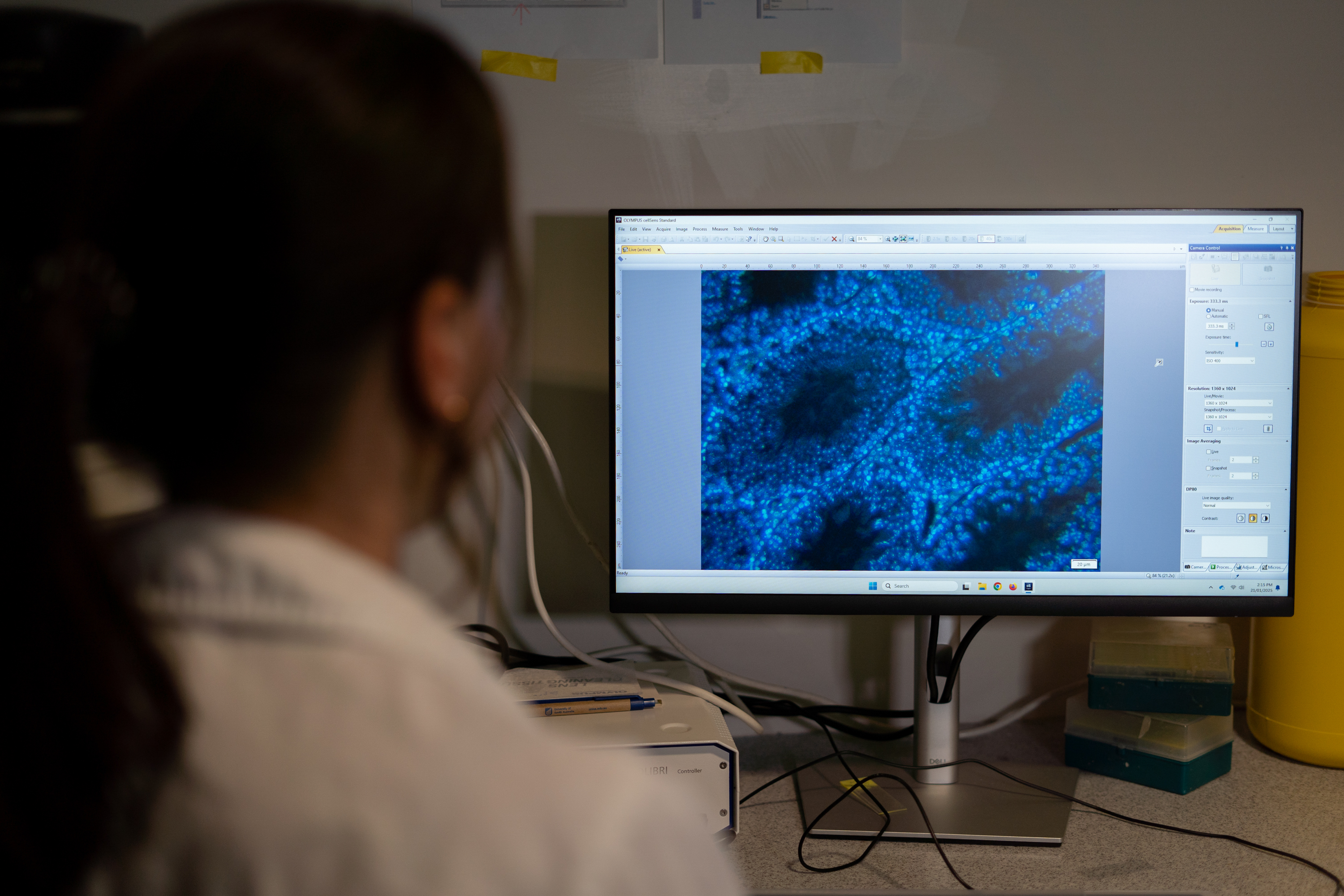Media release
From:
From high-altitude hiking to sleep apnoea, study explores the impact on male fertility
Medical conditions that deprive the testes of oxygen, such as sleep apnoea, may be contributing to the decline in male fertility observed over the past 50 years, a new study suggests.
Published in Nature Review Urology, the literary review explores how factors like sleep apnoea, varicocele, and high-altitude exposure impact sperm quality and overall reproductive health in men.
The review was led by reproductive biologist, Dr Tessa Lord, who is a Senior Lecturer at the University of Newcastle and a member of HMRI’s Infertility and Reproduction Research Program.
“Medical conditions such as varicocele and sleep apnoea reduce the level of oxygenated blood in the testis – a phenomenon known as testis hypoxia,” Dr Lord said.
“We know from existing research that testis hypoxia can negatively impact sperm count and quality by disrupting hormone production and gene expression.”
Findings highlight prolonged fertility threat
The review examined findings from multiple studies to holistically capture the causes and effects of testicular hypoxia in various scenarios.
Dr Lord said when a lack of oxygen in the testes is caused by chronic medical conditions – such as sleep apnoea or varicocele – there is a sustained threat to reproductive health.
“Varicocele, or enlarged veins in the scrotum, is a common abnormality which is diagnosed as the cause of infertility in up to 45 per cent of men who are struggling to conceive,” Dr Lord said.
“Obstructive sleep apnoea is the most common sleep-related breathing disorder. It affects 13 – 30 per cent of the male population, and that number is increasing with obesity being a key risk factor.”
Several studies have shown correlation between sleep apnoea and infertility in males, but Dr Lord said we urgently need further research to understand the direct effects on sperm production and quality.
Dr Lord explained that while high-altitude activities such as hiking can cause lack of oxygen in the testis, or hypoxia, the effects on fertility are usually only temporary.
“The good news for hikers is that impaired fertility from high-altitude is generally reversible once more oxygen is restored in the body.
“This can take a few months to resolve though, following their return to ‘sea-level’,” Dr Lord said.
Dr Lord is calling for greater public and clinical awareness of the reproductive risks associated with sustained testicular hypoxia.
“The timely management of conditions like varicocele and sleep apnoea could help mitigate associated fertility risks,” Dr Lord said.
“There is promising evidence that subfertility caused by hypoxia can possibly be reversed if the underlying issue is addressed,” Dr Lord said.
In men infertility is defined as failure to achieve a pregnancy after 12 months or more of regular unprotected sexual intercourse, while sub-fertility represents a less severe impact that can nonetheless reduce the likelihood of conception.
Urgent need to uncover intergenerational effects
The rise in prevalence of conditions such as sleep apnoea, combined with potential intergenerational effects, makes testicular hypoxia a critical issue in understanding male fertility trends.
“We know male fertility has declined significantly over the past 50 years,” Dr Lord said.
“Emerging evidence suggests that testis hypoxia in fathers could result in embryos with developmental issues, and those children could grow up to experience fertility issues themselves.”
Despite progress in understanding the relationship between hypoxia and fertility, Dr Lord said significant knowledge gaps in science remain.
“We don’t yet have all the answers, particularly around the impact on sperm quality when there is a lack of oxygen in the testis,” Dr Lord said.
“Likewise, more research is needed to understand the full extent of the generational impact.”
Dr Lord urged further research is needed to fully grasp the broader implications of these findings and to develop effective interventions.
“We need to improve fertility outcomes today and also help safeguard the reproductive health of generations to come," Dr Lord said.
The review ‘Pathophysiological effects of hypoxia on testis function and spermatogenesis’ was published in Nature Reviews Urology.
Multimedia







 Australia; NSW
Australia; NSW


